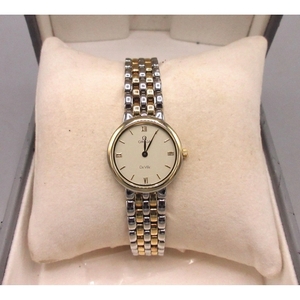News
Object In Focus: A Look Back In Time At Omega Watches
Posted On: 07 Feb 2024 by Jodie Merritt to Object In FocusHere at Ryedale Auctioneers, Omega watches are a popular sight at our sales, thanks to their careful detail, high quality, and range of cool features. To celebrate Omega, we took a closer look at the history of the brand, and considered just why it is such a popular pick today.

Object In Focus: An Insight Into Omega
When it comes to quality watch brands, there is one name that stands out above the rest - Omega. With a rich history dating back to 1848, Omega watches have become synonymous with precision and elegance.
The origins of Omega can be traced back to La Chaux-de-Fonds, Switzerland, where a young watchmaker named Louis Brandt set up a small workshop. Brandt's attention to detail and commitment to excellence quickly gained him recognition in the watchmaking industry. In 1879, Brandt's sons, Louis-Paul and César, took over the business and renamed it Louis Brandt & Fils.
Under the leadership of Louis-Paul and César, Omega watches began to gain a reputation for their accuracy and reliability. In 1894, the brothers developed a revolutionary movement known as the Omega calibre.



Leaders in Innovation
During the late 19th and early 20th century, Omega watches continued to make significant advancements in the watchmaking industry. In 1892, the company introduced the first wristwatch with a minute repeater, a complication that chimes the time upon activation. This innovation showcased Omega's dedication to pushing boundaries and creating timepieces that were both functional and aesthetically pleasing.
Omega's reputation for precision and reliability was further solidified during World War I, when the British Royal Flying Corps chose Omega watches as their official timekeepers. This endorsement from the military further established Omega as a trusted brand in the watchmaking industry.
Omega's reputation for precision and innovation continued to grow in the modern era. In 1932, they became the official timekeepers of the Olympic Games, a partnership that still exists today, and this was an association which played a key role in helping to further solidify Omega's status as a global leader in timekeeping.
In 1957, Omega introduced one of their most iconic models, the Speedmaster, and this is a model that quickly became known as the "Moonwatch" after it was chosen by NASA for their manned space missions. In 1969, the Speedmaster made history when it became the first watch worn on the moon during the Apollo 11 mission, allowing Omega to take their place in history with a reputation for precision and durability.

Technology Fit For A Spy
In recent years, Omega has continued to collaborate with various industries and personalities. They have partnered with James Bond films since 1995, creating special edition watches that capture the essence of the iconic spy. Bond always has a trust Seamaster on his wrist, and these limited-edition timepieces feature unique design elements and are often equipped with advanced technology.
Beyond their collaborations, Omega has also made advancements in watchmaking technology. In 1999, they introduced the Co-Axial escapement, a breakthrough in mechanical movement that improved accuracy and reduced maintenance requirements. This innovation solidified Omega's position as a pioneer in the watchmaking industry.
Final Thoughts
Today, Omega watches continue to be sought after by collectors and watch enthusiasts around the world. Their commitment to precision, innovation, and elegance has made them a timeless brand that stands the test of time - and here at Ryedale Auctioneers, we are always excited to see Omega watches come through our doors. If you have an old watch gathering dust at home, be it Omega, or another luxury brand, contact our team of Valuers, and let us see if we can help you make some money from your treasures!

